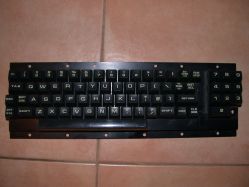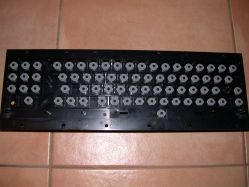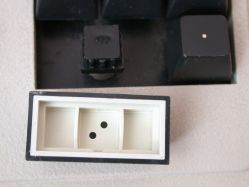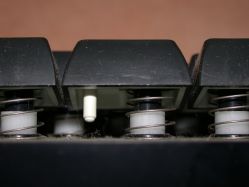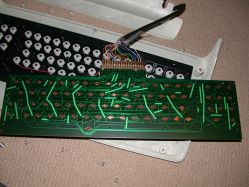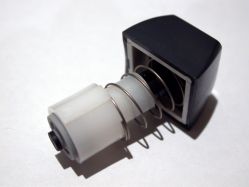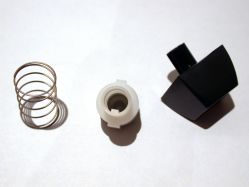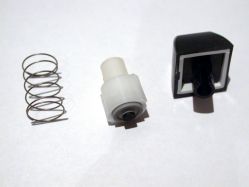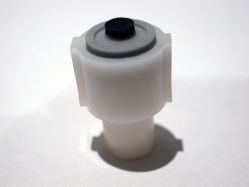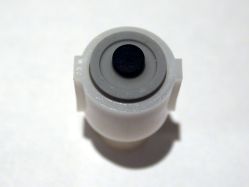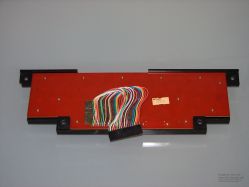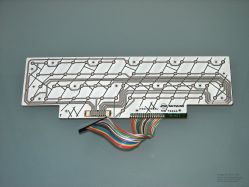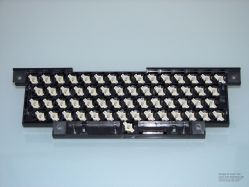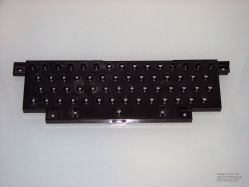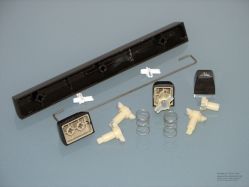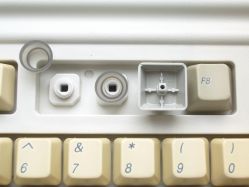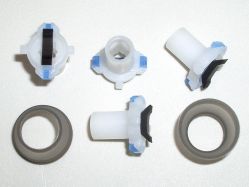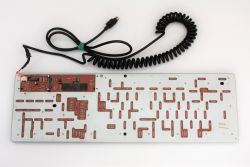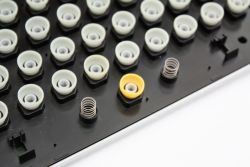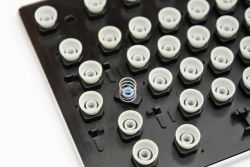Mitsumi hybrid switch
| This article requires additional photographic illustration — some sort of infobox photo, if that is at all possible |
| Manufacturer | Mitsumi |
|---|---|
| Switch type | Tactile; linear |
| Keycap mount | Various |
Mitsumi hybrid is a loose term that covers a number of related switch designs.
Description[edit | edit source]
"Hybrid" switches all use a central shaft that is supported by an external return spring or buckling rubber sleeve under the keycap. At the bottom of this shaft is some device which closes the electric circuit; this can either be conductive, or supply pressure. The device that closes the circuit provides a small amount of overtravel by allowing the conductive or pressure element to flex upwards.
The keycap mount varies between designs. The conductive rubber disc version has been found with the cylindrical Japanese mount. The pressure pad version has been found with a cruciform mount of unconfirmed dimensions. The conductive foot version is found with the hollow square "Mitsumi mount".
Variants[edit | edit source]
The total number of variants manufactured is not known. Listed below are the variants discovered to date.
Conductive rubber disc[edit | edit source]
Found in the Commodore 8032-SK and related machines, this has a small conductive rubber disc at the bottom of the slider. This has been found in an effectively linear form with a helical spring, and the circuit pathways are on a PCB. The following images are from an 8032-SK:
-
Top assembly, top view
-
Top assembly, bottom view
-
Hollow keycap and mount adapter
-
Front view of the switch
-
PCB
-
Slider with keycap attached; the spring does not normally extend that far down
-
Movable parts, including keycaps; the sliders use the old toothed cylindrical mount, and the keycap uses an adapter
-
Movable parts, including keycaps
-
Side view of slider
-
Bottom view of slider
Wide foot[edit | edit source]
These versions use a tall keystem with a laterally suspended pad. The pressure type (KSD Type) such as that found in the Atari 800 (pictured below) appears to use a pair of membranes over a PCB. These are pressure actuated using small rubber pads, attached to a rubber arc that flexes to provide the overtravel. KSR type covers the version with conductive pads over a plain PCB.
-
Rear view showing underside of PCB
-
PCB with two membrane layers
-
PCB removed, revealing the sliders
-
Slider plate
-
Switch components; note the external return springs and cruciform sliders
Conductive foot over membrane[edit | edit source]
This version provides a wide conductive rubber foot, attached to a similar rubber arc as in the pressure version. KPQ Type covers tactile switches and KPR Type covers linear switches; both types use a single membrane layer for the keyboard matrix.
-
Mitsumi-made Apple Keyboard II
-
Switch components from a KPQ-E99ZC
Conductive foot over PCB[edit | edit source]
KKQ and KKR types are externally visibly identical to KPQ and KPR types, but internally they use a PCB instead of a membrane sheet for the keyboard matrix.
-
Commodore CDTV keyboard seen from below, showing PCB
-
Commodore CDTV space bar arrangement
-
Commodore CDTV caps lock spring
Keyboards[edit | edit source]
Keyboards listed below cover switch types that do not yet have their own page, or where the switch type is unable to be determined from existing data.
- Some Magnavox VideoWriter keyboards (KKQ or KPQ, unconfirmed which)
